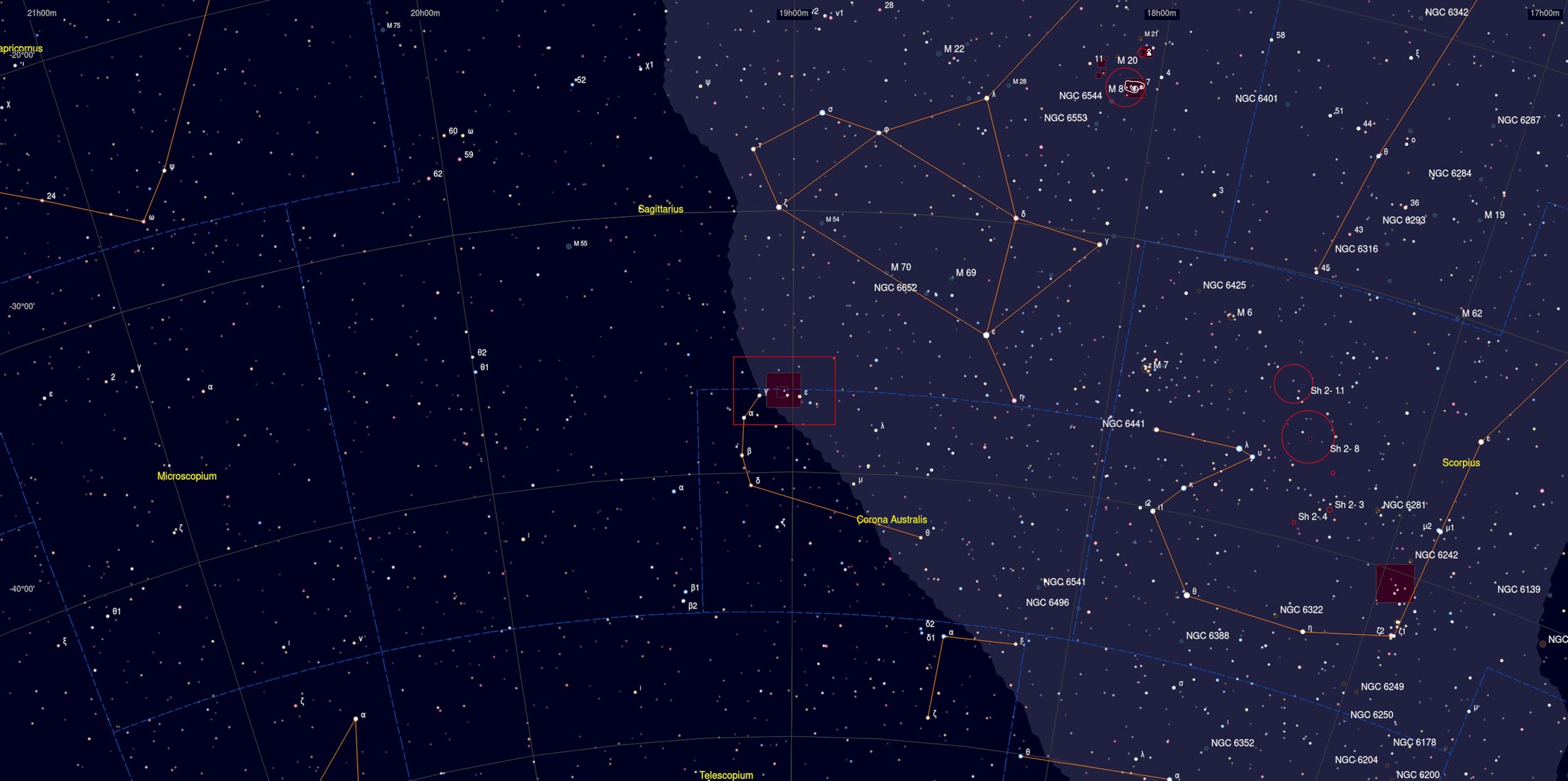R Coronae Australis Nebula (Caldwell 68)
This image contains a couple of prominent objects in the constellation of Southern Crown (Corona Australis). The center of the image is dominated by the bright, bluish reflection nebulae NGC 6726 and NGC 6727. The small nebula to the lower left is NGC 6729, which has variable brightness and changing form similar to Hubble’s Variable Nebula in Monoceros . Right below NGC 6726–7, you can see IC 4812 with its bluish arcs aroud the doublestar WD 1450+432. In addition, many reddish Herbig-Haro (HH) objects can be seen in the dark clouds. All nebulae belong to R Coronae Australis and are about 500 lightyears distant.
Upper right of R Coronae Australis, famous star cluster NGC 6723 can be seen, which is about 30 000 lightyears away.
Details
